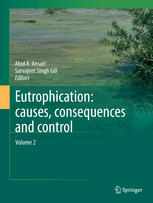

Most ebook files are in PDF format, so you can easily read them using various software such as Foxit Reader or directly on the Google Chrome browser.
Some ebook files are released by publishers in other formats such as .awz, .mobi, .epub, .fb2, etc. You may need to install specific software to read these formats on mobile/PC, such as Calibre.
Please read the tutorial at this link: https://ebookbell.com/faq
We offer FREE conversion to the popular formats you request; however, this may take some time. Therefore, right after payment, please email us, and we will try to provide the service as quickly as possible.
For some exceptional file formats or broken links (if any), please refrain from opening any disputes. Instead, email us first, and we will try to assist within a maximum of 6 hours.
EbookBell Team

4.0
56 reviewsEutrophication continues to be a major global challenge and the problem of eutrophication and availability of freshwater for human consumption is an essential ecological issue. The global demand for water resources due to increasing population, economic developments, and emerging energy development schemes has created new environmental challenges for global sustainability. Accordingly, the area of research on eutrophication has expanded considerably in recent years. Eutrophication, acidification and contamination by toxic substances are likely to pose increasing threats to freshwater resources and ecosystems. The consequences of anthropogenic-induced eutrophication of freshwaters are severe deterioration of surface waters and growing public concern, as well as new interest among the scientific community. “Eutrophication: causes, consequences & control” provides the latest information on many important aspects of the processes of natural and accelerated eutrophication in major aquatic ecosystems around the world.
This book offers a cutting-edge resource for researchers and students alike who are studying eutrophication in various ecosystems. It presents the latest trends and developments in the field, including: global scenarios and local threats to the dynamics of aquatic ecosystems, economics of eutrophication, eutrophication in the great lakes of the Chinese pacific drainage basin, photoautotrophic productivity in eutrophic ecosystems, eutrophication’s impacts on natural metal remediation in salt marshes, phytoplankton assemblages as an indicator of water quality in seven temperate estuarine lakes in southeast Australia, biogeochemical indicators of nutrient enrichments in wetlands – the microbial response as a sensitive indicator of wetland eutrophication, and ultraviolet radiation and bromide as limiting factors in eutrophication processes in semi-arid climate zones. Written by respected experts and featuring helpful illustrations and photographs, “Eutrophication: causes, consequences & control” provides a concise and practical update on the latest developments in eutrophication.